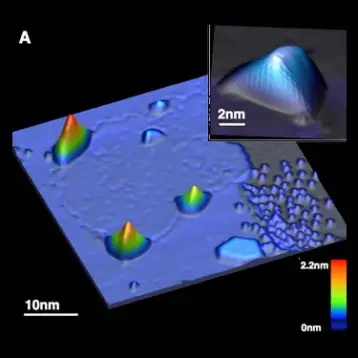|
The idea for this latest innovation was conceived in collaboration with colleagues at the Lashkarev Institute of Semiconductor Physics in Ukraine. According to the researchers, it did not begin as a regular experiment – their first tests were performed out of plain curiosity. Professor Anthony Kent, from University of Nottingham’s School of Physics and Astronomy, said: “While our work on Sasers is driven mostly by pure scientific curiosity, we feel that the technology has the potential to transform the area of acoustics, much as the laser has transformed optics in the 50 years since its invention.”
The Saser uses ultra-high frequency sound waves, in a similar manner to the way laser uses light waves. The traditional Light Amplification by the Stimulated Emission of Radiation (LASER) uses packets of electromagnetic vibrations called ‘photons’. The result is a continuous photon beam, created via stimulating electrons with an external power source; the release of energy (occurring as the electrons collide) is made in a highly reflective optical cavity. The coherent and controllable shining beam of laser light is due to the photons’ homogenous frequency and rate of oscillation.
The Saser mimics the laser technology, but instead of light waves it employs sound waves, and instead of photons it sends phonons. In addition, instead of sending waves through an optical cavity, the sonic Saser travels through a tiny structure called a ‘superlattice’. This structure is made out of 50 super-thin sheets of two alternating semiconductor materials, Gallium Arsenide and Aluminum Arsenide. In order to achieve the exact effect, each layer must be as thin as air – just a few atoms thick. When the phonons are inside the superlattice, they bounce, multiply and eventually escape in the form of an ultra-high frequency photon beam.
Previous researches have tried to develop sound-emitting devices, but this is the first time a device emits sound waves in the terahertz frequency range. As for the beam itself, it consists of coherent acoustic waves, produced at nanometer wavelengths. The scientific and technological applications vary; one example of the Saser’s potential is the sonogram, a device that can scan for defects in nanometer scale objects like micro-electric circuits.
Another application converts the Saser beam to terahertz electromagnetic waves. These can be used for medical imaging and security screening. In the nanotechnology field, high intensity sound waves can be used to change nanostructures’ electronic properties; therefore, the Saser could be used as a high-speed terahertz clock, which could make the computers of the future a thousand times faster.
While laser is found in common devices (such as supermarket scanners and DVD players) and across various industries, the Saser is still under development. However, its makers are convinced that it will become just as common.
In addition to the accolade given by the publication of the study in Physical Review, the research team has won a grant of £636,000 from the Engineering and Physical Sciences Research Council; the team intends to use the grant to further develop the Saser technology over the next four years.
TFOT has previously covered a research that aims to model the sound of water, conducted by scientists at Cornell University in Ithaca, as well as the development of flexible, transparent nanotube-based loudspeakers at Tsinghua University and Beijing University. Other related TFOT stories include the Laser ‘Knife’, a device that fits to the front of a laser source and tames it into usable beams that are able to travel long distances, and the world’s first weapons-grade electronic laser, which is being developed by Northrop Grumman.
For more information about the Saser, please visit University of Nottingham’s website.
Icon image credit: Wikimedia Commons user Barakitty











